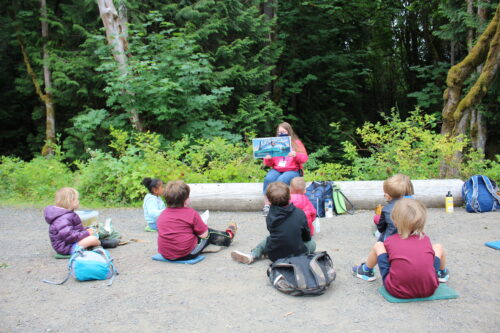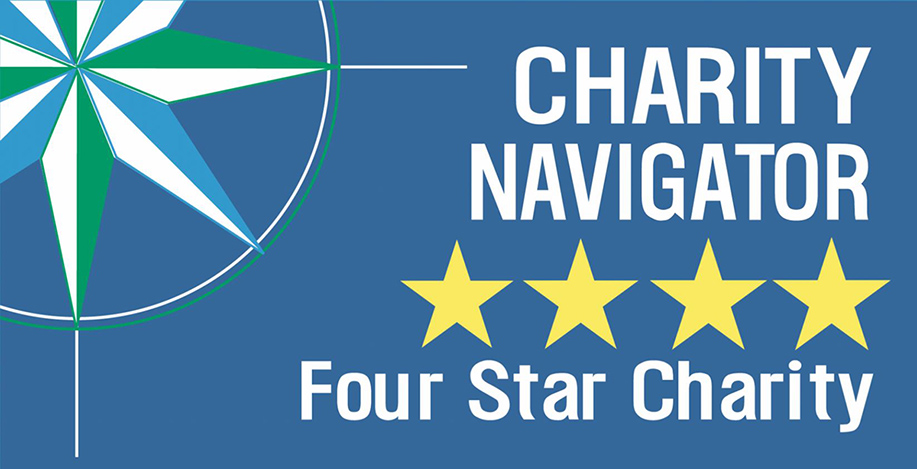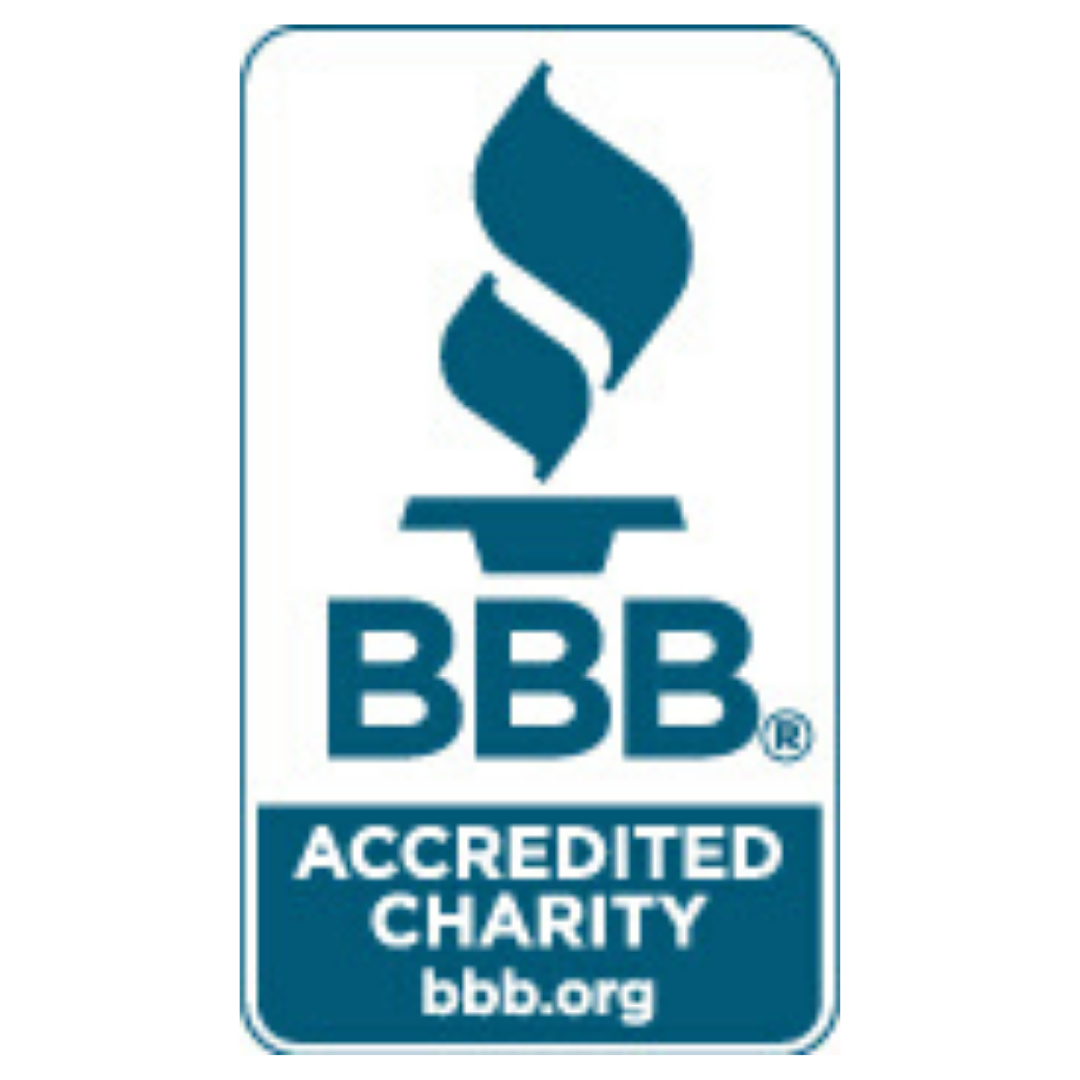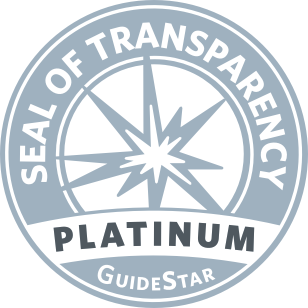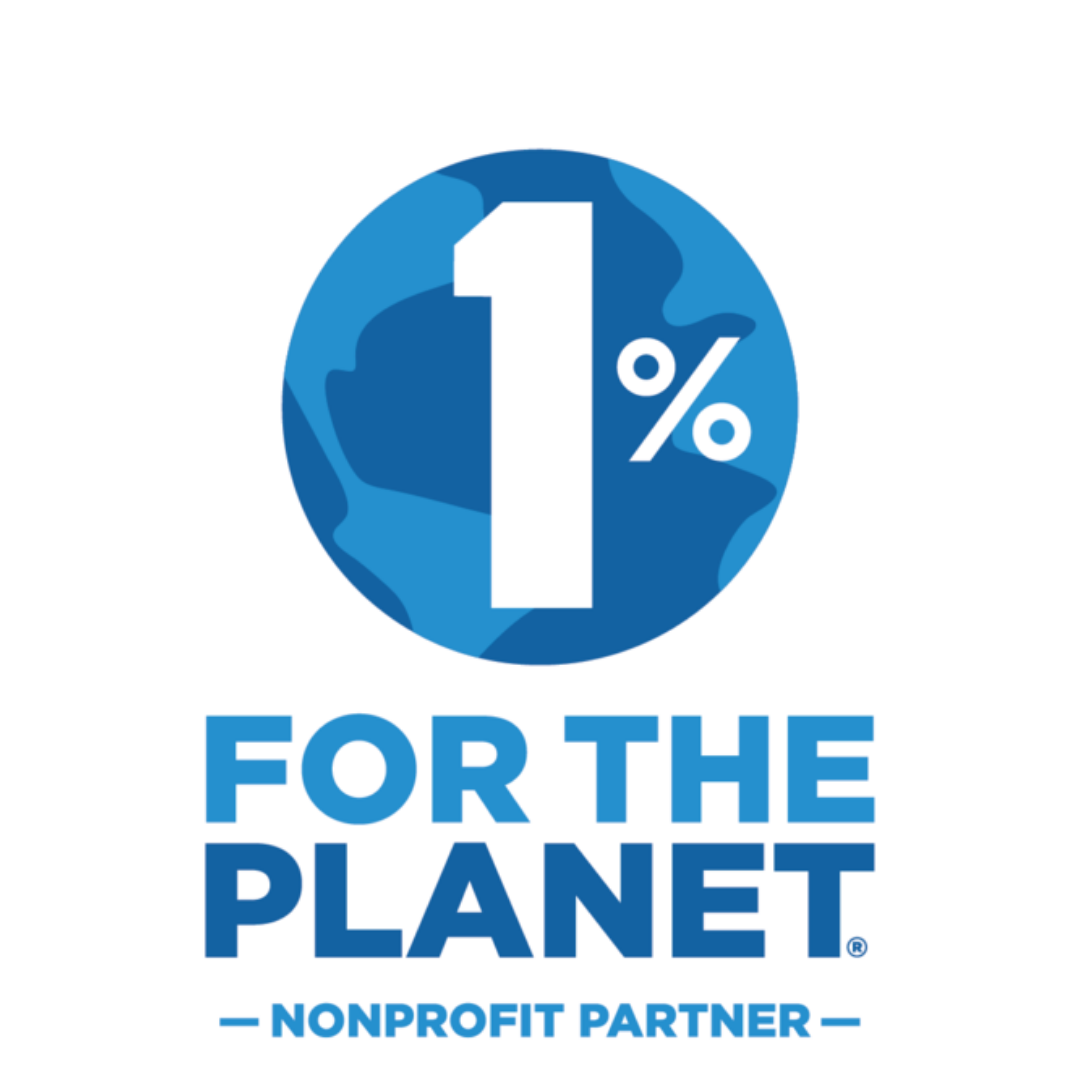This quarter I’m teaching a philosophy of education class called, The Social, Political, and Cultural…
Déana Scipio is not only the Director of Campus Education at IslandWood, but a true children’s book connoisseur. At a recent presentation she gave at the Peacock Family Services Peackocktail Party, the audience was fascinated by Déana’s approach to using children’s books to promote representation and anti-bias. Read on to hear why Dé believes that children’s books have such power to fight oppression, and how she helps IslandWood’s graduate students use children’s books with their own students.
What is the relationship between anti-bias and children’s books? How can children’s books support equity and anti-bias work?
Oh, my goodness. It’s huge. There is a group based at St. Catherine University in Minnesota that looks at all the children’s books that were published within a particular year, and creates a breakdown of the representation in those books, focusing mainly on race equity. And that’s really interesting from a “windows and mirrors” standpoint – looking at who has multiple stories being told about them in a broad spectrum of ways. The numbers of stories being told have been increasing for folks from nondominant communities, but there’s still an overrepresentation of certain stories.
Picture books can also act as students’ models, as their windows and mirrors. Windows into other people’s experience, and hopefully mirrors if they have the opportunity to see themselves represented in these books.
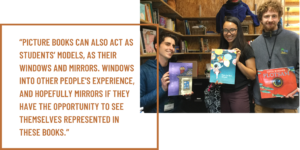
With our graduate program students, I talk about Chimimanda Ngozi Adichie’s “Danger of a Single Story”, and think about that in relation to representation in children’s books. What are the ways in which the “single story” is being communicated because there is such a paucity of representation for folks from nondominant communities?
I am particularly interested in books that are “own voices.” So, stories about communities by members of those communities. It’s important to consider how we can make sure that kids have a broad representation of stories, not just in terms of the characters that are in the story, but stories from creators of color and illustrators of color as well. How do you make sure that your kids see lots of different faces and lots of different experiences and lots of different ways of being in the world?
The other thing that I’m often looking for are books that feature characters from nondominant communities who are just living their lives. Just everyday stories. Because that’s another way to potentially reinforce the single story narrative. Is every book that you’ve ever read that has a character of Japanese-American descent about internment? That is a really powerful story to know, and also a very narrow picture of the Japanese-American experience.
I call some of the books that are beautiful and tell powerful and important stories “issue books.” If the only books that you read about folks that are not of your ethnic background are issue books, it might be time to think about how you can expand the bookshelf so that your kids have a wider range of representations.
There are lots of books that are helping families talk with their kids about topics that might seem scary or may be far removed from their own experience. I think as our society becomes more and more divided and segregated, it’s becoming increasingly important for us to have children’s books as a really great way for parents to open a dialogue with their kids about topics that they may feel less equipped to jump into talking about themselves.
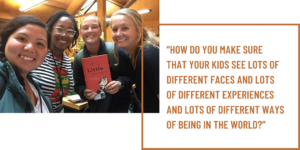
We offer an Applied Learning session for graduate students on anti-bias and children’s books. Why do we offer this session, and what skills and insights do we hope that students will gain from the session?
We offer the session because we want grads to begin to understand how to engage in conversations about taboo topics, and also that this is part of the work we hope they will do here at IslandWood. There’s an interesting public discourse about how important it is for white parents and families to have conversations about race and other topics [that are considered taboo] with their children. We see this session as a way to offer the grad student a concrete approach to thinking differently about what it means to be an anti-bias educator for young people.
The larger frame around why this work is important is connected to the way that Liz Kleinrock talks about this in her TED talk, “How to teach kids to talk about taboo topics.” One of the things that really resonates from Liz’s talk is her commitment to helping her students think about how to talk about topics, rather than telling them what to think. Our hope is that our graduate students will engage with their own students around HOW to have conversations as opposed to WHAT to think about them.
This interview has been condensed and edited for clarity.


![[Image description: A coyote walks in the forest at IslandWood's Bainbridge Island Campus.]](https://islandwood.org/wp-content/uploads/2020/03/Copy-of-ABC-Conference-Speaker-Graphics-3.png)
